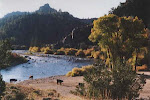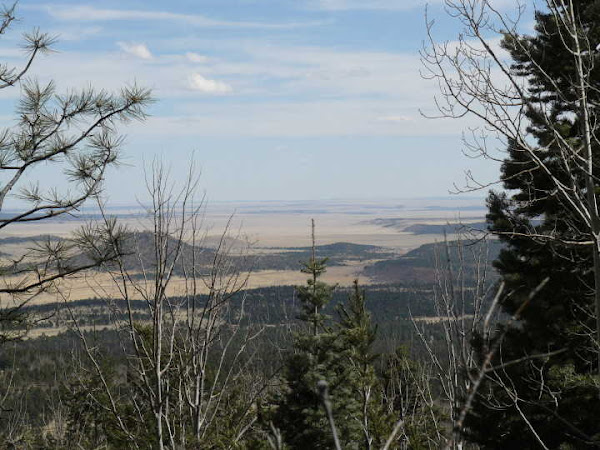Wednesday, September 17, 2008
Nearly 13,000 acres of Mora County land was leased today over the objection of Mora County citizens. The State Land Office auctioned State Trust Land
Nearly 13,000 acres of Mora County land was leased today over the objection of Mora County citizens. The State Land Office auctioned State Trust Land in pristine, agriculturally rich Mora County for oil and gas leases. KHL, Inc. of Albuquerque was the main lessee. The other was Daniel E. Gonzales of Santa Fe acquiring relatively few tracts to lease. Eyeballing the sales, it appears that the leases were obtained in the $28 to $50 per acre range. Cheap, especially when compared to the risk of public health, safety and well being, as well as the potential adverse impacts to water sources, to wildlife and to the land. A 640 acre tract leased for $3.13 for the low; a 40 acre tract leased for $375 for the high.
Some say that we need to "drill, baby, drill" to break the "addiction" to foreign oil and to stop exporting our "wealth" oversees. The proposition is that oil & gas drillers need to wildcat in frontier areas and drill in sensitive off shore zones. Such an argument has a hole in it so big that a semi-truck could drive through it, hopefully fueled by bio diesel.
According to the U.S. Department of Energy, Energy Information Agency (EIA), "there is no empirical basis for believing that drilling in environmentally sensitive offshore zones would significantly affect gas prices. The U.S. Department of Energy’s Energy Information Agency (EIA) projects that such drilling would add some 200,000 barrels of oil per day at peak production in about 20 years. This is about 0.2 percent of world production, and the EIA describes this as too small to have any significant effect on oil prices."
In addition, "Peak Oil" has become mainstream. The United States fossil fuels are in a state of depletion. The new, unconventional drilling methods can not change this fact. The EIA concluded that oil production in the lower 48 peaked in 1970; and in Alaska, production peaked in 1988.
As for natural gas, according to Local Energy News, "(n)ew gas wells just aren’t what they used to be. Even after drilling more than 300,000 new natural gas wells over the last 35 years, the U.S. produces less natural gas now than it did back in 1973. Putting more holes in the ground doesn’t make more gas – in fact, quite the opposite. Just ten years ago, the U.S. was drilling about 11,000 new wells per year to maintain a production rate of 20 Quads of gas per year – a rate that hasn’t changed in more than thirty years. Today, drillers must complete three times that many wells to produce the same amount of gas."
In any event, today was not a good day for Mora County, and we are not closer to solving our energy problems.
Some say that we need to "drill, baby, drill" to break the "addiction" to foreign oil and to stop exporting our "wealth" oversees. The proposition is that oil & gas drillers need to wildcat in frontier areas and drill in sensitive off shore zones. Such an argument has a hole in it so big that a semi-truck could drive through it, hopefully fueled by bio diesel.
According to the U.S. Department of Energy, Energy Information Agency (EIA), "there is no empirical basis for believing that drilling in environmentally sensitive offshore zones would significantly affect gas prices. The U.S. Department of Energy’s Energy Information Agency (EIA) projects that such drilling would add some 200,000 barrels of oil per day at peak production in about 20 years. This is about 0.2 percent of world production, and the EIA describes this as too small to have any significant effect on oil prices."
In addition, "Peak Oil" has become mainstream. The United States fossil fuels are in a state of depletion. The new, unconventional drilling methods can not change this fact. The EIA concluded that oil production in the lower 48 peaked in 1970; and in Alaska, production peaked in 1988.
As for natural gas, according to Local Energy News, "(n)ew gas wells just aren’t what they used to be. Even after drilling more than 300,000 new natural gas wells over the last 35 years, the U.S. produces less natural gas now than it did back in 1973. Putting more holes in the ground doesn’t make more gas – in fact, quite the opposite. Just ten years ago, the U.S. was drilling about 11,000 new wells per year to maintain a production rate of 20 Quads of gas per year – a rate that hasn’t changed in more than thirty years. Today, drillers must complete three times that many wells to produce the same amount of gas."
In any event, today was not a good day for Mora County, and we are not closer to solving our energy problems.










